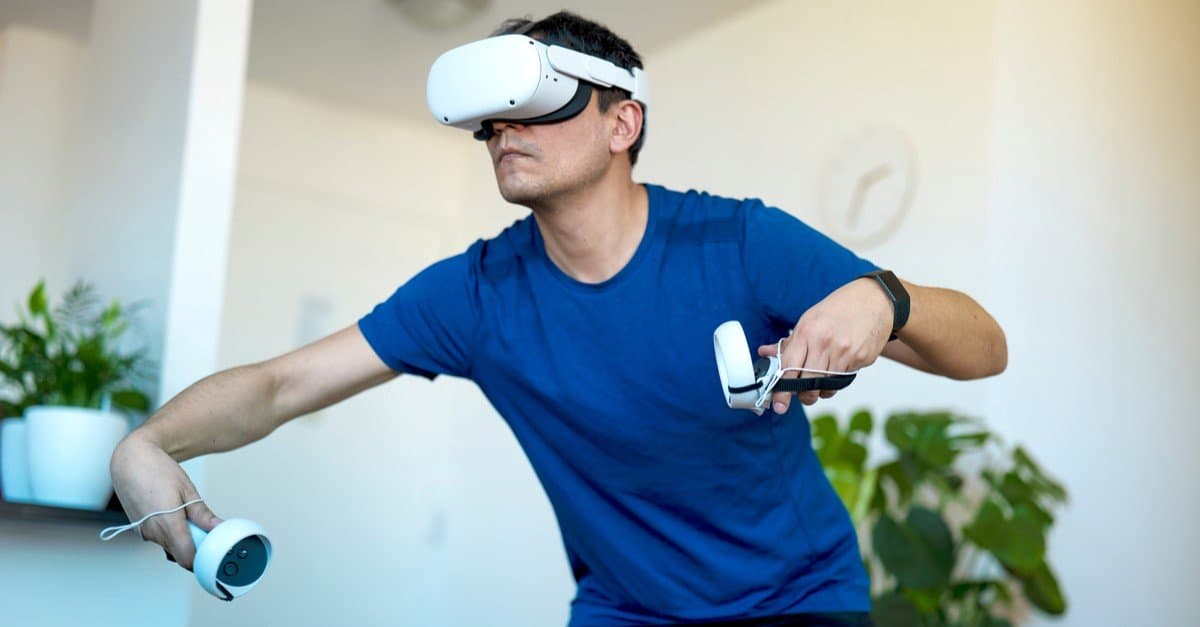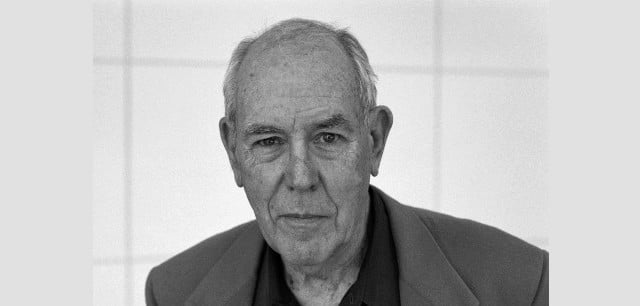Ivan Sutherland is an American engineer and scientist who invented various new types of technology, including the Sketchpad, the Sword of Damocles (a unique helmet which could generate a field of vision for the user), and a six-legged robotic crawler. He also hold numerous patents for various microprocessor and computer system designs. Sutherland also worked as a professor at several universities, including Harvard and Berkeley. He also wrote or co-wrote several books and won several awards for his pioneering work.
Who is Ivan Sutherland?

Ivan Sutherland is an American engineer and computer scientist who is today considered one of the primary pioneers in the fields of computer graphics and augmented reality design. As such, he is one of the leading lights behind the formation of the internet and of personal computing as we know them today.
Quick Facts
- Full Name
- Ivan Sutherland
- Birth
- May 16, 1938
- Net Worth
- Anywhere between $1 million and $12 million
- Awards
- Turing Award (1988)
- John von Neumann Medal (1998)
- Kyoto Prize (2012)
- Children
- Dean (son) and Juliet (daughter)
- Nationality
- American
- Place of Birth
- Hastings, Nebraska
- Fields of Expertise
- [“Computer graphics”,”Virtual reality”,”Asynchronous processor design”]
- Institutions
- The University of Utah, Caltech, Harvard University, Carnegie Mellon University, Portland State University
- Contributions
- Sketchpad, the Sword of Damocles
An inveterate tinkerer, Sutherland’s technical and mechanical interests also propelled him into areas beyond those mentioned above. Though primarily remembered for his pathbreaking contributions to computer graphics, virtual reality, and GUI design, Sutherland has also done some interesting work in fields like robotics, cybernetics, and the construction of asynchronous circuits.
As one of the unsung — or at least relatively unknown — fathers of the information age, Sutherland’s life and career deserve a detailed look. All throughout, he has remained driven by a spirit of creativity, a lust for exploration, and a commitment never to allow settled patterns of thought to dictate how one approaches a new project.
Early Life
Ivan Sutherland was born in Hastings, Nebraska, on May 16, 1938. It was apparent from almost the very beginning of his life that building and engineering were in his blood. His father, an immigrant from New Zealand and a civil engineer was one of the designers of the Kingsley Dam — located in Keith County, Nebraska — which officially opened in 1941 and remains the second-largest hydraulic dam in the world. The elder Sutherland showed his son many dams he had worked on throughout his career, and Ivan Sutherland fondly recalls learning about them and their workings. Due to his father’s work, Sutherland’s family moved around quite a bit during his childhood, first to Wilmette, Illinois, and then to Scarsdale, New York.
His mother, a teacher, also nurtured his interest in building things. As Sutherland recounted during a 2016 interview with the National Inventors Hall of Fame, “Mother had inherited a collection of Richter blocks. Mother would ask me to build one of the things drawn in these plans, and then she would check whether I had gotten it right. And I learned to read the plans and construct the bridges correctly at a very young age.”
These mechanical talents persisted throughout his childhood. While only in the eighth grade, Sutherland was able to build a gantry crane using some old junk motors that his father had brought home. Sutherland also recalls that in high school, geometry was his favorite subject. He considers himself a visual thinker, which would explain both his early fondness for that subject and the nature of his work as an adult. Indeed, Chuck Seitz, an architect and computer scientist who would become friends and colleagues with Sutherland, insists that Sutherland is and always has been a kind of geometer.
While in high school, Sutherland would also have his first encounter with a computer. This machine — arguably the world’s first personal computer — was called SIMON, and it was a relay computer with a total of 12 bits of memory — six words of two bits each. In 1950, its designer, Edmund Berkeley, lent it to the Sutherland household. Sutherland was eventually able to write a program that enabled SIMON to divide numbers, achieving this feat by adding a conditional stop into the machine’s instruction set.
The fact that Sutherland was one of only a minuscule number of high school students even writing computer programs at that time was impressive enough, but his program was also the longest which had ever been written for SIMON up to that point, comprising eight feet of paper tape in total. In the twelfth grade, Sutherland was also able to build a magnetic drum with a 256-bit memory. These achievements no doubt helped him to win a full scholarship to study at Carnegie Mellon University.
Sutherland would receive a B.S. in electrical engineering from Carnegie Mellon in 1959 and an M.S. from Caltech in 1960. To complete his education and receive his Ph.D., he would go to the Massachusetts Institute of Technology.
A Pathbreaking Career

Ivan Sutherland has had a long and illustrious career which includes the invention of the Sketchpad and a helmet called the Sword of Damocles which could generate a field of vision for the user.
MIT and Sketchpad
It was while studying and researching at MIT that Ivan Sutherland made the first of his epochal contributions to computer science.
There, he had run into the Lincoln TX-2 computer and was enthralled by what he saw. Though its capabilities appear quite primitive today, the TX-2 was extremely innovative for its time. It was first designed in 1956 and boasted two memory cores: one vacuum-tube-drive core capable of holding up to 64K 36-bit words and another even faster transistor-driven 4K memory core. It also generated a 512 x 512-pixel display and was the first computer to communicate successfully with others by sending data packets, making it a crucial step in the eventual development of the Internet. Most critically, the computer gave users the power to interact with it directly — a totally novel feature at the time.
Users interacted with the TX-2 using a light pen, a device originally designed to locate and identify computer-drawn objects — and this was what gave Sutherland his first great idea: the idea that users could themselves draw their own objects on a computer screen.
This idea lies at the core of Sketchpad.
Sutherland came up with Sketchpad in 1962 while working on his Ph.D. thesis. It worked essentially as follows. A user would enter drawing commands using a keyboard and then use a specially designed light pen to draw whatever sorts of arcs and figures he wanted to draw on his computer screen. Using a series of special buttons on the pen, he could also move the objects he had drawn around the screen, scale them in size by an arbitrary multiple, and rotate them by any number of degrees he wanted to.
Sketchpad could also modify figures according to some prescribed set of constraints — for example, by changing the edges of a figure to all be perpendicular to one another or by shifting a set of lines until each is parallel to all of the others. This made Sketchpad the first GUI.
Besides the TX-2, another major influence on Sutherland’s development of Sketchpad was Vannevar Bush’s important 1945 paper “As We May Think,” in which Bush described his idea of a Memex, a then-hypothetical device on which people could store and compress all kinds of data. With this in mind, Sutherland gave his application the ability to store previously drawn figures in its memory. Once saved on magnetic tape, previously drawn figures could be recalled again.
As Alan Kay — a one-time student of Sutherland’s and an important computer scientist in his own right — pointed out, Sketchpad was written using an object-oriented programming language at a time when all other languages were procedural. This alone is one of the most important inventions in the entire history of computer science.
In 1963, Sutherland wrote his doctoral thesis describing his inventions and his findings. It was called Sketchpad: A Man-machine Graphical Communications System. Claude Shannon, the founder of information theory, was his main thesis advisor, and other members of his thesis advisory committee included such giants of computer science as Marvin Minsky and Steven Coons.
Military and Government Service
Light pens had originally had military applications. In particular, the SAGE air defense project used them to beef up its military defense systems. Because of this, Ivan Sutherland’s extension of their capabilities naturally drew the military’s attention, and after graduating from MIT in 1963, he went off to work for the Army.
As part of his military service, he was made a first lieutenant and assigned to work at the University of Michigan. Shortly thereafter, his knowledge of computers landed him a job at the NSA as an electrical engineer. Then, in 1964, Sutherland replaced J. C. R. Licklider as the head of DARPA’s Information Processing Techniques Office. He was provided with a budget of $15 million per year to sponsor all sorts of computer science research, particularly in the areas of timesharing and artificial intelligence.
To have some idea of what this meant for the 26-year-old Sutherland, a bit of background is in order. First, DARPA, or the Defense Advanced Research Projects Agency, was founded on February 7, 1958, in response to the Soviet Union’s launch of Sputnik. DARPA’s purpose is to invest in and develop technologies that may have national security applications. It is especially known for its willingness to throw funding behind wacky and speculative projects.
J. C. R. Licklider was a psychologist and computer scientist who was one of the pioneers of interactive computing. Not only did his ideas help to create computing as we know it today, but his organizational genius brought together many of the most brilliant trailblazers in the field, creating a heady environment that allowed countless other important inventions and contributions to emerge. Licklider’s biographer W. Mitchell Waldrop has called him “computing’s Johnny Appleseed.”
The fact that Sutherland was chosen to replace such a man at DARPA indicates his brilliance. But his star would only grow brighter.
The Sword of Damocles

Sutherland left government service and became Associate Professor of Electrical Engineering at Harvard University in 1965 and remained there until 1968. During this period, Sutherland began performing the first experiments with head-mounted displays. That is, he took ideas that he developed while making Sketchpad — especially his ideas about generating and manipulating visual objects — and attempted to push them into the three-dimensional realm.
Sutherland got the idea of a helmet that a user could wear to generate a visual field for him. The helmet would track the movements of the user’s head and eyes and use that information to shift the user’s perspective on the generated objects accordingly. In short, Sutherland began developing the first virtual reality, or VR displays, before they even had that name.
Sutherland first outlined his vision in a 1965 paper called “The Ultimate Display.” In it, he described the possibility of creating a device that could generate a visual field so realistic as to be indistinguishable from reality itself. In a final speculative flourish at the end of the paper, he commented on the possibility that the device might actually create real objects. As he put it, “The ultimate display would, of course, be a room within which the computer can control the existence of matter. A chair displayed in such a room would be good enough to sit in. Handcuffs displayed in such a room would be confining, and a bullet displayed in such a room would be fatal.” Southland thus established himself as one of the pioneers of augmented reality.
With this vision in tow, Sutherland called on the help of his students Bob Sproull, Danny Cohen, and Quintin Foster, and together, they created the helmet that Sutherland had envisioned. It projected two separate wireframe images — one for each of the user’s eyes — and so created a visual field.
Apparently, on the theory that an imposing-looking device should have an imposing-sounding name, Sutherland decided to call his invention the Sword of Damocles. Because the helmet was so heavy, it was suspended from the ceiling and attached to a mechanical arm to keep it from crushing the user. The mechanical arm also relayed and processed information about the user’s head and eye movements.
Sutherland and his students showed off their new AR/VR design at the 1968 Fall Joint Computing Conference in San Francisco. With this, the field of augmented reality or virtual reality took a massive leap forward.
Further Career in Education and the Private Sector

After these scintillating contributions to the field of AR, Sutherland dived headlong into his career as an educator. In 1968, he became a professor of Computer Science at the University of Utah. Though the department had only just been formed coincident with his arrival, he would help to put the school on the map as a Mecca for research in the field.
The roster of his students there between 1968 and 1974 reads like a Who’s Who of computer science greats: Nolan Bushnell, the founder of Atari; Alan Kay, creator of the Smalltalk language; John Warnock, creator of the PDF; Gordon Romney, the first person to render 3D images; Jim Clark, the founder of Silicon Graphics and the co-founder of Netscape; Edwin Catmull, co-founder of Pixar — and many others.
While this was happening, Sutherland was also expanding into the private sector. In 1968, along with his friend David C. Evans, he founded Evans & Sutherland, a company that did pioneering work to further the field of computer graphics and design printer languages.
From 1974 to 1978, he worked as head of the Computer Science Department at Caltech, turning circuit design into a serious subject. From 1976 to 1980, he served as a consultant for the RAND Corporation. In 1980, he also co-founded a consulting firm with his former student Bob Sproull called Sutherland, Sproull, and Associates. Ten years later, Sun Microsystems would buy that firm. Throughout this period, Sutherland worked on making animated movies — another pioneering feat.
Later, Sutherland would become a fellow and vice president at Sun Microsystems, a position he holds today. He would also a visiting scholar in computer science at UC Berkeley from 2005 to 2008.
Now, he has essentially left the field of computer graphics and instead works as a leading researcher in the area of asynchronous systems — that is, digital systems with no global clock. He does this at Portland State University, where he has held a position since 2008.
More of Ivan Sutherland’s Inventions
In addition to Sketchpad and the Sword of Damocles, already discussed in detail above, Sutherland has many other inventions to his name. For example, in 1983, while working with researchers at Carnegie Mellon, he built a six-legged, hydraulic-powered robotic walker called the Trojan Cockroach. You can see him demonstrating it in the video below.
Over the course of his life, Sutherland has been granted more than 60 patents, which have contributed significantly to growing his net worth. Some of the patents which he still holds today include:
- US Patent 7,636,361 — Apparatus and Method for high throughput asynchronous communication with flow control (2009)
- US Patent 7,417,993 — Apparatus and Method for high throughput asynchronous communication
Family and Personal Life
Net Worth
Sutherland’s exact net worth is unknown. However, various sources estimate it at anywhere between $1 million and $12 million.
Marriage
On May 28, 2006, Sutherland married Mary Roncken. He and his wife are both researchers in asynchronous systems at Portland State University.
Children and Family
Sutherland has two children — a son named Dean and a daughter named Juliet. He also has four grandchildren named Robert, William, Belle, and Rose. His brother Bert Sutherland is also an important computer scientist.
Ivan Sutherland: Awards and Achievements
Sutherland has won many awards and honors throughout his life. Here are some of them:
- First Zworykin Award from the National Academy of Engineering (1972)
- National Academy of Sciences Membership (1978)
- Turing Award (1988)
- IEEE John von Neumann Medal (1998)
- Kyoto Prize (2012)
- National Inventors Hall of Fame Inductee (2016)
Noted Publications
- Sketchpad: A Man-machine Graphical Communications System (1963 Ph.D. thesis from MIT)
- The Ultimate Display (1965)
- Sorting and the hidden-surface problem (co-written with Bob Sproull and Robert A. Schumacker) (1973)
- Logical Effort: Designing Fast CMOS Circuits (book co-written with Bob Sproull and David Harris) (Publisher: Morgan Kaufmann, 1999)
- Designing Fast Asynchronous Circuits (co-written with Jon K. Lexau) (2001)
Notable Quotes
- “Well, I didn’t know it was hard.” (When asked by Alan Kay how he could have created GUIs and object-oriented programming in the same year.)
- “Where does curiosity come from? It is inherent in youth. Graduate students don’t know what can’t be done, and so, they go ahead and do it.”
- “If we simply liberate the next generation to permit their curiosity to be exercised and encourage them to do new things, innovation will go on as fast or faster than it’s gone now.”
- “I think of myself as a human being, and I cherish the notion that there are aspects of being a human being that are intellectual and that are emotional.”
- “It’s not an idea until you write it down.”
- “Never underestimate the power of the professorial windbag.”
- “Knowledge is a rare thing — you gain by giving it away.”
- “Interesting colleagues are essential.”
- When denied my minimum daily adult dose of technology, I get grouchy… without the fun, none of us would go on.”

